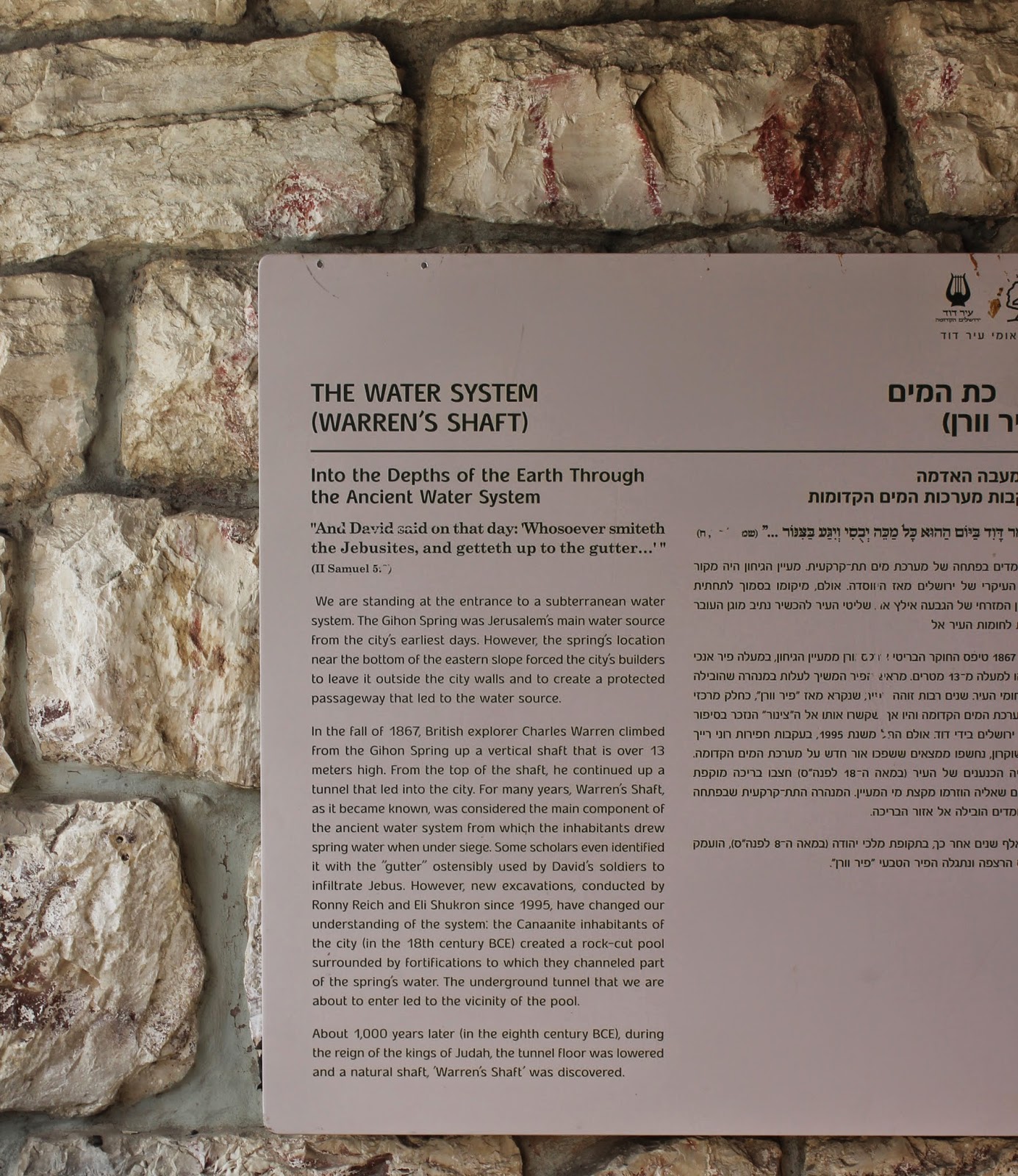In 1830, a hexagonal clay prism,
known as the "Taylor Prism,"
was discovered among the ruins of Ninevah.
It tells us that Sennacherib, the king of Assyria
in the Eighth Century BC,
had Hezekiah trapped in Jerusalem
like a "bird in a cage."
like a "bird in a cage."
Hezekiah and his engineers refortified
the city walls and carved a 1, 720 foot tunnel
out of solid bedrock to bring
the ever-flowing waters of the Gihon spring
into the inner sections of the city.
The only spring in Jerusalem,
the Gihon is a siphonic, karstic
spring, and its name means "gushing".
It is thought that the Gihon
could have supported a population of 2500.
,
the city walls and carved a 1, 720 foot tunnel
out of solid bedrock to bring
the ever-flowing waters of the Gihon spring
into the inner sections of the city.
The only spring in Jerusalem,
the Gihon is a siphonic, karstic
spring, and its name means "gushing".
It is thought that the Gihon
could have supported a population of 2500.
,
1 Kings 1:38 2 Kings 20 2 Chronicles 29-32
The Gihon Spring was Jerusalem's main water source
from the city's earliest days.
However, the spring's location
near the bottom of the eastern slope
forced the city's builders to leave it outside
the city walls and to create a protected passageway
that led to the water source.
The tunnel, leading from the Gihon Spring
to the Pool of Siloam,
was designed as an aqueduct
to provide Jerusalem with water
during an impending siege by the Assyrians,
led by Sennacherib.
The curving tunnel is 522 meters long.
According to the Siloam inscription,
the tunnel was excavated by two teams,
one starting at each end of the the tunnel
and then meeting in the middle.
With trail and some errors,
it is thought that the teams digging
were directed from above using sounds
generated by hammering on the solid karst (limestone)
through which they were digging.
The tunnel, leading from the Gihon Spring
to the Pool of Siloam,
was designed as an aqueduct
to provide Jerusalem with water
during an impending siege by the Assyrians,
led by Sennacherib.
The curving tunnel is 522 meters long.
According to the Siloam inscription,
the tunnel was excavated by two teams,
one starting at each end of the the tunnel
and then meeting in the middle.
With trail and some errors,
it is thought that the teams digging
were directed from above using sounds
generated by hammering on the solid karst (limestone)
through which they were digging.
Hezekiah's Tunnel was discovered by American explorer
Edward Robinson in 1838.
In the 1860's another explorer named Charles Warren
is credited for the discovery of a 52 foot vertical shaft
that descends to the level of the water tunnel.
You can touch the pick marks
on the walls of the tunnel.
on the walls of the tunnel.
fortified walls and ceilings-
notice arch and the
very large blocks.
There are some wonderful explanations and diagrams
at this following site
to give even more info about this tunnel.
Hezekiah_Tunnel
notice arch and the
very large blocks.
There are some wonderful explanations and diagrams
at this following site
to give even more info about this tunnel.
Hezekiah_Tunnel

























































